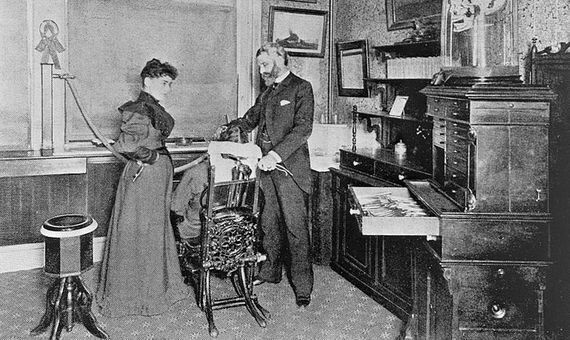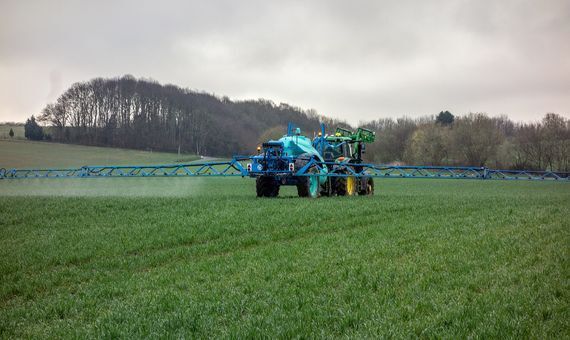In 1774, the English chemist Joseph Priestley began publishing a series of volumes describing what he called different types of air, based on his experiments with gases. One of these, later identified as nitrous oxide or N2O, was rediscovered at the turn of the century by fellow chemist Humphry Davy as a possible anaesthetic, for which he coined the name “laughing gas” because of the euphoric effects it produced when inhaled. But the compound—which was much more readily used as a recreational drug than for medicinal purposes—hides a dark side that does not invite laughter: it is a potent greenhouse gas, and its increased presence in the atmosphere due to human activity is now the third leading cause of climate change, behind only CO2 and methane.

In Davy’s time, laughing gas became a means of amusement and an object of addiction for London’s high society thanks to its promotion by the chemist himself, who was also a popular figure among his contemporaries. Interestingly, although it often flies under the radar today, nitrous oxide is the 14th most widely used drug in the world—including legal highs—prized mainly for its euphoric effect and relatively low toxicity compared to other drugs. But it is also a common compound in nature, forming part of the nitrogen cycle, the most abundant element in the Earth’s atmosphere. And while there are many natural sources of nitrous oxide, currently 40% of N2O emissions are caused by humans.
The main destroyer of the stratospheric ozone layer
In the atmosphere, nitrous oxide acts as a greenhouse gas (GHG) 300 times more potent than CO2 and about twelve times more powerful than methane. But while methane breaks down in around twelve years, N2O lasts just over a century. Given that N2O accounts for around 7% of GHG emissions, it is not surprising that it has become a major concern for scientists and organisations involved in the fight against climate change. In addition, nitrous oxide is now the main destroyer of the stratospheric ozone layer after the banning of chlorofluorocarbons, or CFCs.

The boom in anthropogenic N2O emissions stems from the discovery in the early 20th century of the Haber-Bosch process, which allowed inert atmospheric molecular nitrogen to be artificially fixed into a plant-usable fertiliser, breaking the dependence on naturally occurring ammonia and nitrates. This discovery, considered one of the most life-saving advances in human history, was a key factor contributing in the middle of the last century to the Green Revolution or third agricultural revolution, which today sustains the food supply of a significant part of humanity.
But the massive use of nitrogen fertilisers around the world, in commercial form or as manure, has had an undesirable consequence: skyrocketing N2O emissions due to nitrogen oxidation by soil and plant microbes. In 2019, research co-led by Pep Canadell, a researcher at Australia’s Commonwealth Scientific and Industrial Research Organisation (CSIRO) and executive director of the Global Carbon Project, found that the UN’s Intergovernmental Panel on Climate Change (IPCC)—of which Canadell is a member—had previously underestimated both the figures for nitrous oxide emissions and their growth. The reason is that such calculations took into account indirect magnitudes, such as fertiliser production and use, along with data provided by countries.
Make better use of fertilisers
By directly monitoring measurements of atmospheric N2O concentrations and localising emissions using mathematical models, Canadell and his collaborators found that emissions have grown more than expected this century, especially since 2009, and particularly from China and Brazil. Over the past four decades, these emissions have increased by 30%. According to the researchers, this mismatch between expected and detected figures is due to the fact that, when the nitrogen supplied to crops reaches saturation, nitrous oxide emissions begin to grow exponentially rather than linearly.
The problem, Canadell explains to OpenMind, is that “it is very unlikely that we will find alternatives to nitrogen or technologies that will allow the use of N fertilizers while eliminating losses of nitrogen from the system.” However, he adds, while we cannot do without fertilisers, we can make better use of them: “As Europe and to some extent the US have demonstrated, it is possible to maintain or increase agricultural productivity while stabilising or declining N2O emissions.” In certain regions such as China, Canadell notes, fertiliser subsidies result in huge amounts being used that do not improve crop yields. “It is largely a misuse of fertilisers, not the efficient use that is required.”
So, in the absence of new technological advances to reduce nitrogen use, one way to reduce these emissions is precision farming, which supplies plants with exactly the amount of fertiliser they need in each area of the crop, at each stage of development and at the right depth. These practices, increasingly widespread in developed countries, “would go a long way to increase the efficiency and reduce emissions,” says Canadell. Other measures available today, such as rotating crops with those that produce their own nitrogen—such as legumes—improving animal manure management or using nitrification inhibitors, among others, are also available.
Agriculture, cause of the increase in N2O in the oceans
However, although agriculture accounts for 70% of anthropogenic N2O emissions, there is another important source that accounts for 25% of global emissions: the oceans—in particular the so-called dead zones, marine regions with very low oxygen concentrations. These hypoxic zones occur when an excess of nutrients in the water causes eutrophication, a massive growth of phytoplankton. As these micro-organisms die and fall to the bottom, the decomposition of these sediments consumes oxygen and produces massive amounts of N2O that are eventually released into the atmosphere. In 1950, there were an estimated 50 dead zones in the oceans. Today there are around 500, and once again it is mankind that is responsible, as fertiliser and sewage discharges lead to this eutrophication; therefore, agriculture is also a major cause of the increase in N2O in the oceans.

The additional problem of oceanic dead zones is that they feed back into global warming. As Mariona Claret, an oceanographer at the University of Washington, tells OpenMind, “as temperatures rise, oxygen solubility decreases and stratification of the water layer increases, which decreases mixing between well-oxygenated surface water and deeper water.” Claret adds that this is the main cause of deoxygenation in the open ocean, far from the coast and in tropical areas. And so, if the increase in dead zones aggravates climate change through N2O emissions, warming in turn also leads to the appearance of more dead zones.
Another consequence of this is that dead zones don’t only occur where river discharges increase nutrient content. Research by Claret and her colleagues has shown that changes in ocean circulation—also driven by climate change—promote the expansion of hypoxic zones. “In the northern Atlantic, in particular, the Gulf Stream (oxygen-poor) is moving northwards and the Labrador Current (oxygen-rich) is retreating into the Newfoundland area,” Claret says. The consequence, she adds, is a reduction of oxygen in the St. Lawrence Estuary, the world’s largest, and in the coastal waters of Nova Scotia and Maine. “So far this has only been observed in coastal waters of the northwest Atlantic,” Claret says, but it is another potential feedback mechanism of climate change.
Therefore, while the main focus of the fight against climate change is usually on reducing CO2 emissions, mainly due to fossil fuels, Canadell says that a reduction in N2O emissions of 10-30% by the middle of this century will also be necessary to meet the goals of the Paris agreement, limiting global warming to a maximum of 1.5 °C. And while CO2 emissions growth has slowed in recent years, “N2O emissions continue to grow in most regions of the world except Europe.”
Comments on this publication